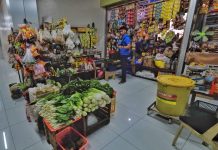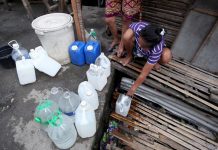The World Bank on Thursday said that while the poverty level has already decreased and economic growth has shown signs of acceleration in the Bangsamoro Autonomous Region in Muslim Mindanao (BARMM, more efforts should be made to boost farm profitability and improve access to social services in the region.
“In the middle of the pandemic, the BARMM witnessed a significant decline in poverty by over 40% and this represents a pivotal shift from decades of persistent poverty at about 60% in the region while the rest of the country was witnessing a sustained and rapid decline in poverty,” said World Bank Senior Economist Nadia Belghith during the Philippines Economic Update (PEU) Development Dialogues for June 2024 held at the Novotel Manila Araneta City in Quezon City.
The World Bank’s PEU report showed that the region’s poverty level dropped to 37.2 percent in 2021 from more than 60 percent, which means approximately 892,000 people escaped poverty between 2018 and 2021.
According to the World Bank, poverty has declined rapidly in the region, helped by income growth and government and private transfers.
In terms of economic growth, the World Bank noted that the region had an average growth of 7.9 percent between 2017 and 2019, outpacing the rest of the Philippines, which grew at an average of 6.4 percent before the coronavirus disease 2019 pandemic.
Bangsamoro is home to around five million people, predominantly comprised of Muslim ethnic groups, Indigenous Peoples, and other ethnic minorities.
The World Bank said the decline in poverty coincided with the implementation of the Bangsamoro Organic Law in 2018 establishing the BARMM as an autonomous administrative region, significant increases in financial support from the national government, and consistent economic growth.
It added that the national government’s budget allocation for the BARMM almost doubled recently to PHP130 billion.
The bank, however, noted that despite these gains, the poverty rate in the BARMM in 2021 was still significantly higher than the national poverty rate.
“Numerous households, despite having risen above the poverty line, remain in fragile economic conditions. This situation leaves them vulnerable to sliding back to poverty when confronted with economic shocks such as natural calamities, underscoring the continuing need for social protection and initiatives to improve livelihoods,” said Belghith.
To ensure rapid poverty reduction in the region, the World Bank cited the need to improve access to basic services and infrastructure.
According to World Bank’s report, 28 percent of the region’s population still depend on unimproved water sources, 37 percent use unsafe sanitation facilities, and approximately 20 percent of the population also lack access to grid electricity.
The World Bank said low child health indicators, subpar malnutrition and vaccination rates, and limited access to education and healthcare facilities also impede human development.
According to the World Bank, women’s economic involvement and empowerment are also urgently needed to boost sustainable growth. (PNA)






